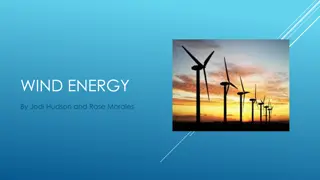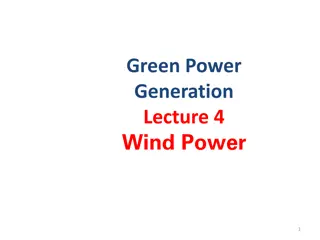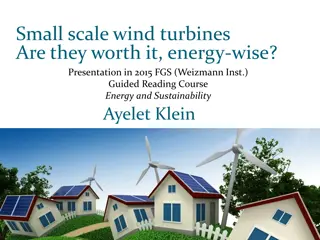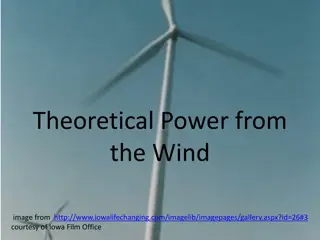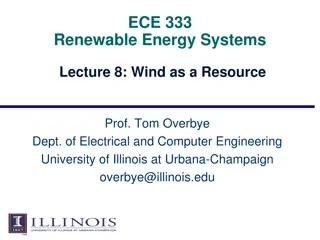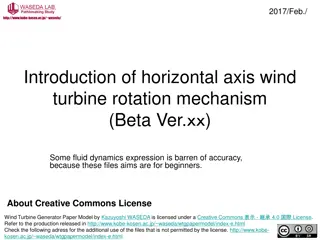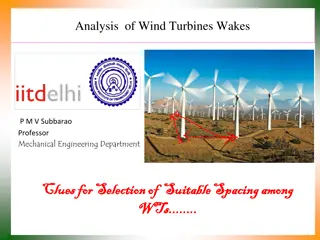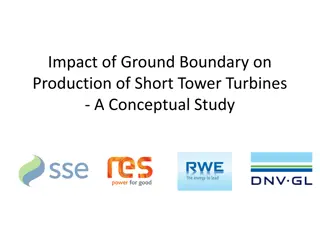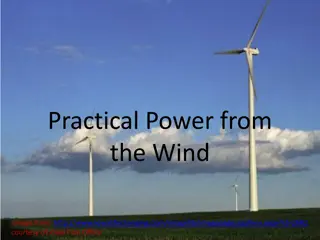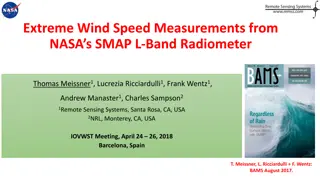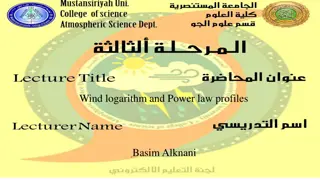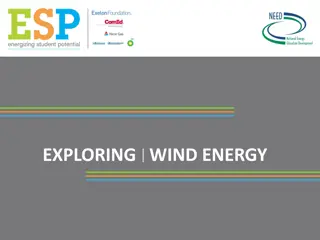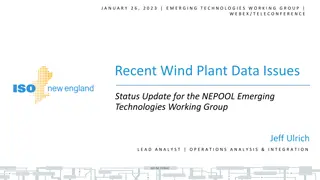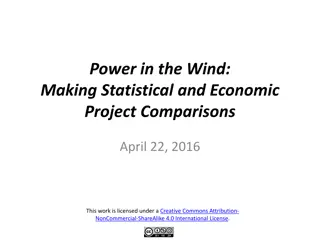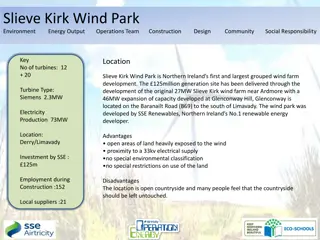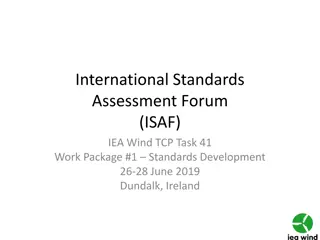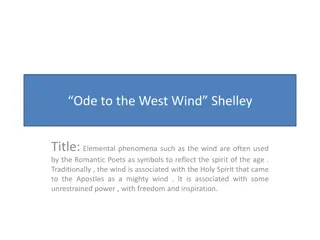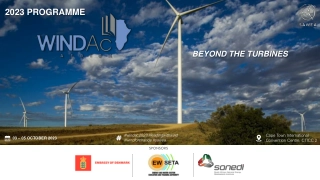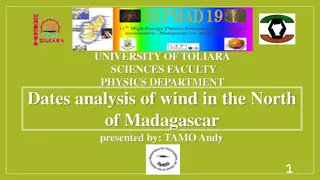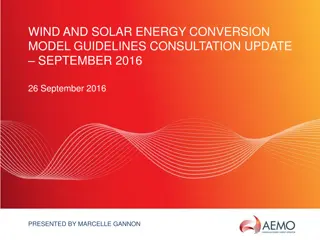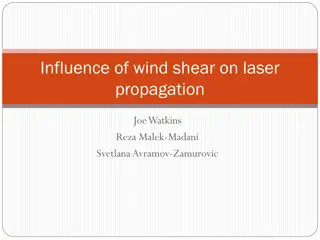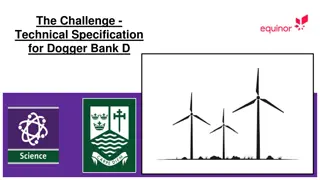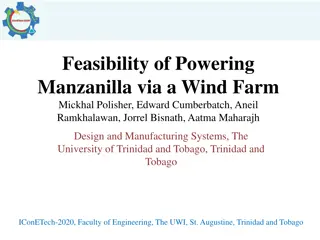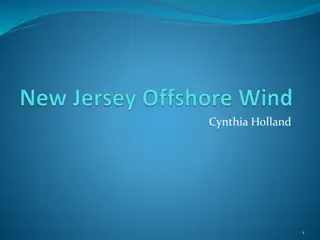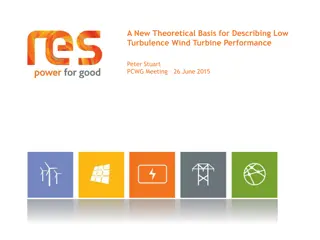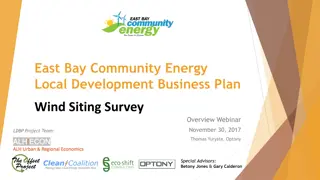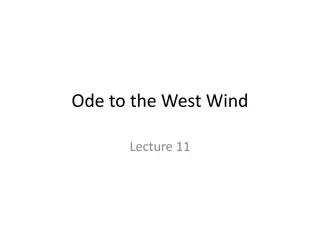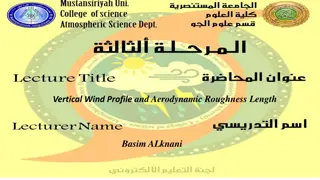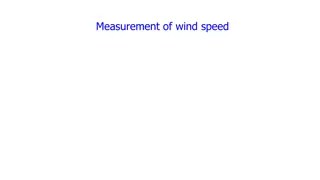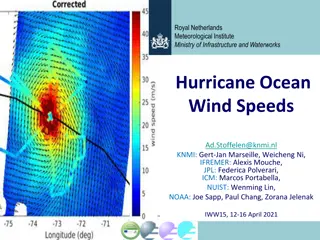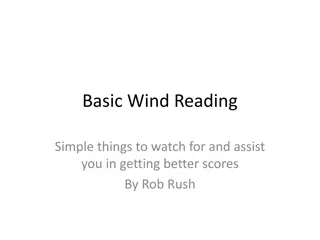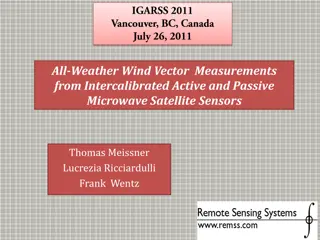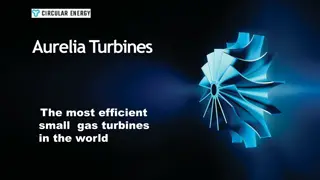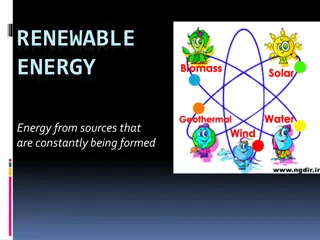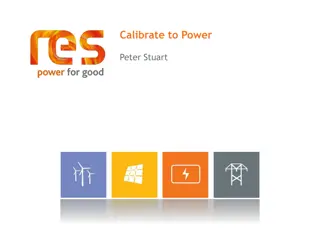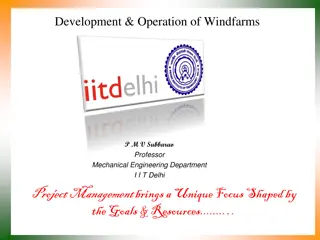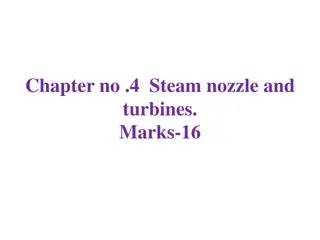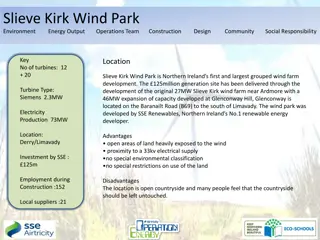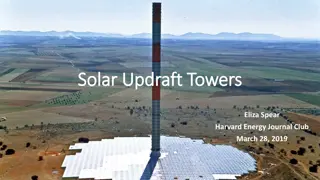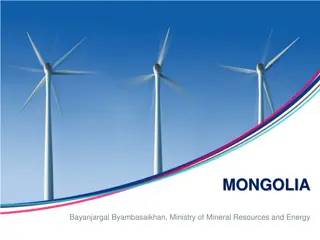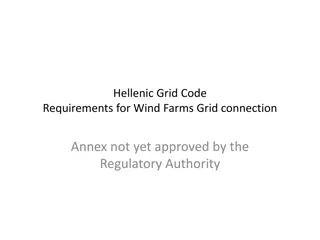Understanding Wind Power: Historical Development, Turbines, and Statistics
Explore the historical development and statistics of wind power, from the first wind turbine in 1891 to the global capacity growth. Learn about the types of wind turbines - Vertical Axis and Horizontal Axis, their advantages and disadvantages, and various wind turbine models. Discover how wind power contributes to green energy solutions and its impact on CO2 emissions and energy storage.
Download Presentation

Please find below an Image/Link to download the presentation.
The content on the website is provided AS IS for your information and personal use only. It may not be sold, licensed, or shared on other websites without obtaining consent from the author. Download presentation by click this link. If you encounter any issues during the download, it is possible that the publisher has removed the file from their server.
E N D
Presentation Transcript
Wind Power Green Energy Rabie Abu Saleem
Skeleton Historical Development And Statistics Wind Power Turbines Wind Power Calculations Wind Power and CO2 Emissions Wind Power and Energy Storage Wind Power and Smart Grid Conclusion References
Historical Development and Statistics
Historical Development and Statistics Historical Development Wind power is old. 1891: First wind turbine by a Dane Poul la Cour. 1890s: First wind-electric systems in the US in. 1930s and 1940s: many were running in the US. 1941: largest system (1250 kW) built at Grandpa s Knob in Vermont.
Historical Development and Statistics Statistics Global capacity growth over 25% per year since the mid-1990s.
Wind Power Turbines Vertical Axis Wind Turbines (VAWTs) Horizontal Axis Wind Turbines (HAWTs)
Wind Power Turbines Types of Wind Power Turbines Horizontal Axis Wind Turbine (HAWT) Vertical Axis Wind Turbine (VAWT)
Wind Power Turbines Horizontal Axis Wind Turbine (HAWT) advantages: increased efficiency. smooth transfer of power from the rotor to the gearbox. Higher power levels and smaller footprints on the ground. Disadvantages: require a yaw system maintenance has to be done at the top. require tall cranes for set-up.
Wind Power Turbines Vertical Axis Wind Turbine (VAWT) advantages: generator and gearbox can be housed on the ground. requires no yaw mechanism. Disadvantages: not much wind. Little starting torque. Repair requires taking the whole machine apart. 40% less efficient in energy production.
Wind Power Turbines Vertical Axis Wind Turbine (VAWT) Darrieus wind turbine Giromills wind turbine Savonius wind turbine
Wind Power Calculations Power Calculation Friction Effect Average Power
Wind Power Calculations Power m v A v
Wind Power Calculations Friction Effect Friction Coefficient for Various Terrain Characteristics Terrain Characteristics Smooth hard ground, calm water Tall grass on level ground High crops, hedges and shrubs Wooded countryside, many trees Small town with trees and shrubs Large city with tall buildings Friction Coefficient 0.10 0.15 0.20 0.25 0.30 0.40
Wind Power Calculations Average Power Rayleigh probability density function:
Wind Power and CO2 Emissions Windmills don t decrease the CO2 emission, it can further increase it!!
Wind Power and CO2 Emissions Balance the total supply with the total demand. Studies: 2007: Wind power reduced CO2 emissions by over 28 million tons. DOE: 20% of the electricity from wind energy by 2030 would cut CO2 emissions by over 7.6 billion tons. Natural gas used by 50%. In Texas: Adding 3,000 (MW) of wind energy would reduce : CO2 by about 5.5 million tons per year sulfur dioxide by about 4,000 tons per year nitrogen oxide by about 2,000 tons per year. 30 MW Kaheawa wind plant in Hawaii reduced oil imports by almost 10 million gallons per year.
Wind Power and Energy Storage Energy Storage and Flexibility Energy Storage Options The UltraBattery Technology
Wind Power and Energy Storage Energy Storage and Flexibility Studied Less studied storage valuable but not necessary storage increasingly valuable and at some point necessary Low Carbon Future Past Present Near Future 0% 1% 20% 100% Fraction of Energy from Wind and Solar Flexibility as an alternative. recourses for flexibility : Spinning reserves. Non-spinning reserves. Hydroelectric , natural gas.
Wind Power and Energy Storage Energy Storage Options Existing already: Hydroelectric reservoirs gas pipelines gas storage facilities coal piles Other options: Hydrogen Production Thermal Storage Flywheel Energy Storage Compressed Air Storage Pumped Storage Battery Storage
Wind Power and Energy Storage The UltraBattery Developed by CSIRO Two technologies: supercapacitor and lead acid battery. high charge discharge rates and greater energy storage.
Wind Power and Energy Storage The UltraBattery Compared to Ni-Metal hydride batteries: 70% less expensive. comparable performance: fuel consumption carbon-dioxide emissions cycle life. faster charge and discharge rates. Challenges Operational potential. gassing rate cycle-life cost. weight.
Wind Power and Smart Grid The grid is not an electricity storage device, and adding windmills decreases the grid stability!!
Wind Power and Smart Grid Electrical grid can be thought of as an energy storage system. sources of flexibility for more stability. smart grid.
Wind Power and Smart Grid Smart Grid Smart Devices Use of two-way communication Advanced sensors and control systems * Many applications: Self Healing Networks
Self Healing Networks Normal Feeder Configuration Substation 1 Substation 2 N.O 1500 customers loss Self Healing Networks Intellirupters Substation 1 N.O Substation 2 750 customers saved
Conclusions Wind energy is an old energy that is still undergoing huge development and capacity growth Power produced by a wind turbine depends on its Type, its size, and its location. Considering the total balance of supply and demand of energy, wind power contributes in decreasing the total emission of CO2 For the near future, storage of wind energy in valuable but not essential, for future clean energy it is essential. Battery Storage technologies are the most promising with wind power. Flexible resources and the smart grid can help reducing the problem of grid instability.
References Masters G. Renewable and Efficient Electric Power Systems . A JOHN WILEY & SONS, INC., PUBLICATION.(2004) p307-379 UltraBattery . The Commonwealth Scientific and Industrial Research Organisation(CSIRO). Retreived on December 2 2011 from: http://www.csiropedia.csiro.au/pages/viewpage.action?pageId=426226 Ragheb M., Notes on Energy Storage Options . Retrieved on December 1 2011 from: https://netfiles.uiuc.edu/mragheb/www/NPRE%20498ES%20Energy%20Storage% 20Systems/Energy%20Storage%20Options.pdf Basics about Wind Energy. American Wind Energy Association, Retreived on November 29 2001 from: http://www.awea.org/ Rousan T. A talk about Distribution Automation & Smart Grid Technologies , American Association for Arab Engineers and Architects. November 2001. http://www.newenergywatch.com/2006/11/vawt_versus_haw.html http://www.nrel.gov/wind/systemsintegration/energy_storage.html



